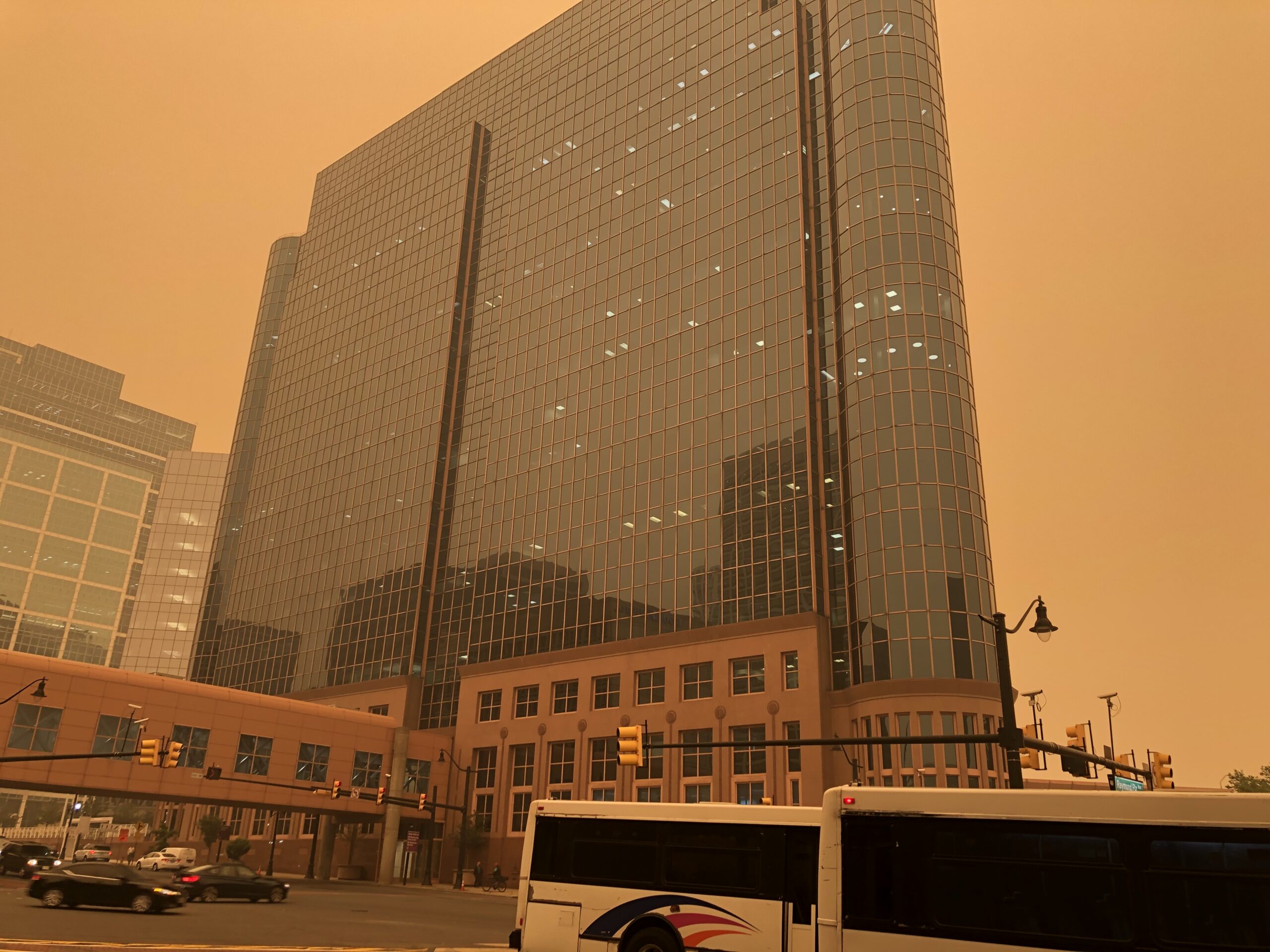By Walter Elliott
NEWARK – People in and around the Newark metropolitan area may well remember June 7, 2023 as the day when the sky turned orange.
Smoke from some 160 wildfires in Canada’s Quebec and eastern Ontario provinces, aided by a stationary high stalled above Maine and New Brunswick, descended onto New Jersey and the tristate New York Metropolitan region June 6-8. An estimated 9.4 million acres there had been scorched as of June 8.
The smoke particles, which came from the northwest, took a track through New York’s Finger Lakes region, the eastern half of Pennsylvania and most of New Jersey on its way to the Carolinas.
Those particles, according to the federal airnow.gov Air Quality Index, reached 550 particles of 2.5 microns or smaller that Wednesday afternoon – a level beyond the 301-500 Hazardous range that was reached the day before and day after.
The New Jersey Department of Environmental Protection issued a Code Orange air quality alert that Wednesday for Essex and Passaic Counties.
NOAA, the National Oceanic and Atmospheric Agency meanwhile showed a Red Flag Warning for critical fire conditions for most of New Jersey and some Pennsylvania counties.
The red flag was for dry ground conditions that set the stage for wildfires. Two fires near Southern New Jersey’s Wharton State Forest – the Buzby Boggs and City Line fires – have consumed an overall 1,550 acres as of June 12.
Canadian weather officials have said that the first forest fire was sparked by a lightning strike in Quebec on June 2. Firefighters have been coming from across Canada and the U.S. to battle the blazes, which may take all summer.
Around 100 million people, as far south as Georgia and as far west as Indianapolis, Ind., experienced unhealthy and “very unhealthy” airborne particulate content, an airborne campfire-like smell, itching eyes and, for some, labored breathing.
Various authorities advised most people to stay indoors or limit outside exposure and activity. Children, senior citizens and/or people with heart and/or breathing problems were particularly stressed to stay indoors.
Dozens of outdoor activities were brought inside if not postponed or outrightly cancelled. Some indoor activities, events and meetings were also put off or called off.
The Newark Public Schools were among five public school districts to be closed June 7-8. West Orange Public Schools canceled their outdoor June 8 activities.
The Orange Public Library Board of Trustees postponed their monthly meeting from 6:30 p.m. June 8 to June 15.
Gov. Phil Murphy (D-Rumson) ordered most State of New Jersey offices to close at 1 p.m. June 8. Those offices were reopened by 10 a.m. June 9.
The haze and smoke caused delays of an average 82 minutes for airline departures from Newark Liberty International Airport June 8.
Rutgers Medical School’s Committee of Interns and Residents had postponed June 7 rallies for better working conditions and wages in Newark and New Brunswick for another time.
Those who live in California and other Western U.S. and British Columbia may be telling their East Coast counterparts, “Now you know what we’ve been going through since 2017.”
The Western US had been going through 20 years of drought. The Colorado River has been experiencing such low water levels that the river dries up before it can empty into the Gulf of Baja.
Dry conditions have turned its wildfire season out there into a wildfire year.
The rain, when it does hit, brings flooding and mudslides with it. California had experienced 22 such storms last winter.
East Coasters may be taking the following pages from their Pacific Coast colleagues:
- Make fire break lines by clearing shrubbery and small growth trees.
- Set up community clean air shelters.
- Distribute HEPA filters and K95 and KN95 masks.
- Weatherize houses to create clean air areas and to seal off smoke.
- Install air quality sensors.


